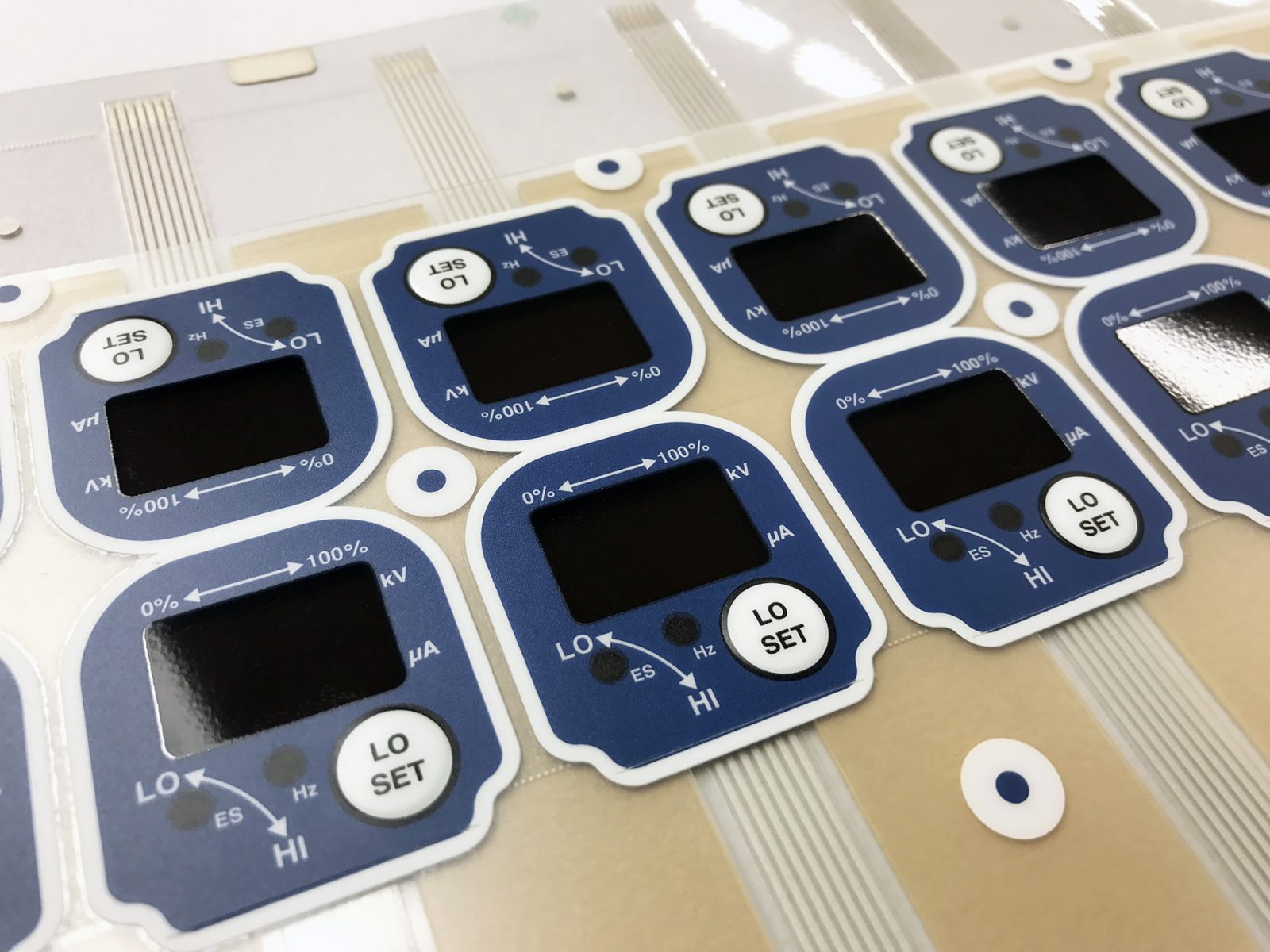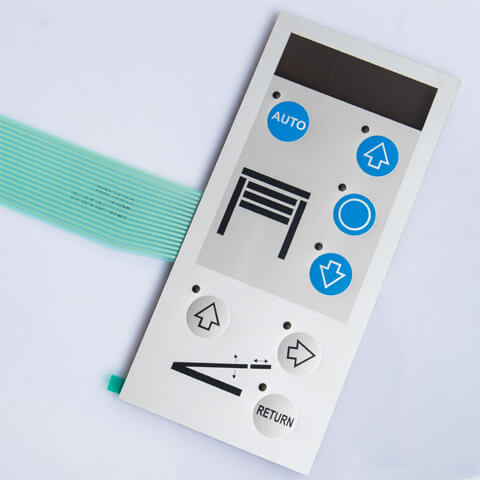The Importance of Membrane Switches in Designing User-Friendly Interfaces
The Importance of Membrane Switches in Designing User-Friendly Interfaces
Blog Article
Membrane Layer Switch Over Innovation: The Trick to Reliable and Economical Interfaces
Membrane button modern technology has actually emerged as an essential component in the design of user interfaces, offering both integrity and cost-effectiveness across a varied range of applications. As we discover the diverse benefits of membrane buttons, their possibility for development raises questions concerning future applications and progressing fads.
Understanding Membrane Layer Switch Modern Technology
Membrane layer button technology is a commonly used interface service in different digital tools, offering a smooth blend of functionality and design. This modern technology incorporates several layers of materials, generally being composed of a visuals overlay, spacer layer, and a circuit layer. The graphic overlay shows the user interface aspects, while the spacer layer divides the circuit layer from the overlay until an individual turns on a button.
When stress is put on the overlay, the circuit layer finishes the electric circuit, sending a signal to the tool. This mechanism permits various arrangements, including tactile feedback and backlighting choices, boosting individual interaction. Membrane buttons are typically made using long lasting materials such as polyester or polycarbonate, ensuring durability and resistance to ecological aspects like dampness and dirt.
The versatility of membrane switches over allows their application in diverse markets, including medical devices, customer electronics, and industrial controls. Their portable layout permits assimilation into space-constrained atmospheres, supplying an efficient interface without jeopardizing visual appeal. Comprehending the complexities of membrane button modern technology is vital for producers and developers looking for to develop trusted and efficient human-machine interfaces.
Key Benefits of Membrane Switches
While various user interface remedies exist, membrane layer changes offer unique advantages that make them a favored selection in many applications. One of the key benefits is their toughness; membrane buttons are made to stand up to rough ecological conditions, consisting of wetness, dust, and temperature level variations, ensuring long-lasting performance. This durability significantly lowers the requirement for regular replacements, thereby lowering general maintenance expenses.

Moreover, membrane layer switches are light-weight and compact, making them appropriate for applications where area is limited. Their low-profile style adds to a sleek look without compromising performance.
Cost-effectiveness is also a significant benefit, as the production process for membrane layer switches over often tends to be more economical contrasted to traditional mechanical switches. This cost, integrated with their integrity and convenience of setup, settings membrane layer switches over as a useful service for a vast array of industries seeking efficient and reliable interface.
Applications Across Numerous Industries
Exactly how do membrane layer switches adjust to the varied demands of various markets? Membrane switch modern technology is significantly recognized for its versatility, making it suitable for a broad variety of applications across several markets.
In customer electronics, membrane switches offer a compact remedy for push-button controls and home devices, boosting customer experience with user-friendly design. Furthermore, the commercial industry leverages membrane buttons for machinery control board, gaining from their resistance to extreme environments, such as moisture and dust.
Army and aerospace applications likewise make use of membrane layer buttons for their integrity and ability to withstand extreme problems, making sure operational performance in important situations. Additionally, the food and drink industry embraces these switches for automated systems, where cleanliness and convenience of operation are extremely important. Ultimately, membrane layer switches are customized to meet the special needs of browse around these guys each sector, verifying their crucial duty in contemporary technology interfaces
Style and Modification Options

In the world of membrane button modern technology, layout and customization choices play an essential function in boosting functionality and individual interaction. These switches can be customized to meet certain functional demands and visual choices, making them functional parts in various applications.
Among the main personalization alternatives is the design of the switch itself, which can be created to accommodate special interface and ergonomic factors to consider. By adjusting the shape, dimension, and plan of switches, producers can produce user-friendly designs that promote ease of usage. Furthermore, the unification of various shades and graphic overlays enables branding and enhanced visibility, making sure that customers can rapidly determine features.
Moreover, membrane layer switches can be crafted with numerous tactile comments mechanisms, such as raised switches or audible clicks, to enhance the customer experience. Different materials can likewise be picked for resilience and environmental resistance, dealing with variables such as wetness, temperature level fluctuations, and chemical direct exposure.
Inevitably, the extensive layout and customization choices offered in membrane button innovation empower organizations to develop tailored remedies that not only useful source fulfill functional needs but also align with their branding and functional demands.

Future Trends in Membrane Layer Buttons
As membrane layer switch modern technology proceeds to evolve, future trends are significantly concentrated on enhancing individual experience and incorporating innovative capabilities. One substantial trend is the assimilation of touch-sensitive and capacitive technologies right into standard membrane switches. This development permits even more instinctive individual interfaces, supplying tactile comments while preserving a smooth design.
An additional emerging trend is making use of environmentally friendly materials, driven by the expanding need for sustainable manufacturing methods. Manufacturers are seeking to decrease their carbon impact by using recyclable substratums and low-impact inks, lining up with international sustainability goals.
Furthermore, the rise of the Web of Things (IoT) is prompting the unification of smart features into membrane layer switches. Boosted connection alternatives will make it possible for tools to interact with each various other, allowing for smooth integration into more comprehensive systems.
Additionally, innovations in printing innovations, such as electronic printing, are enabling higher layout adaptability and modification. This enables manufacturers to produce detailed styles and vivid colors cost-effectively.
Verdict
To conclude, membrane switch modern technology stands for a vital advancement in interface style, providing considerable benefits in resilience, personalization, and cost-effectiveness. Its widespread applicability across varied markets highlights its value in modern-day technology. As advancements continue to emerge, particularly in touch-sensitive interfaces and lasting materials, the possibility for membrane layer changes to boost user my website experience and performance remains encouraging. Proceeded exploration of this modern technology will likely yield even more renovations and broaden its scope in future applications.
Report this page